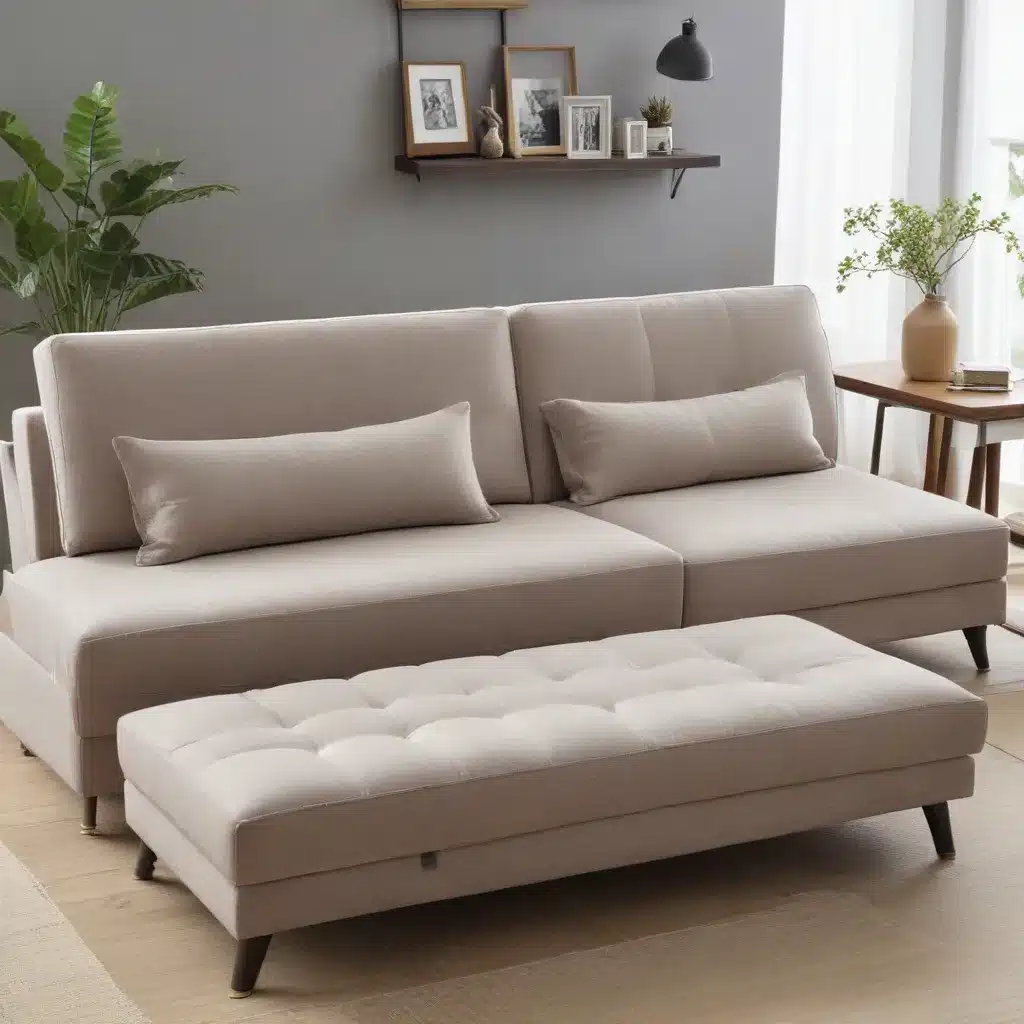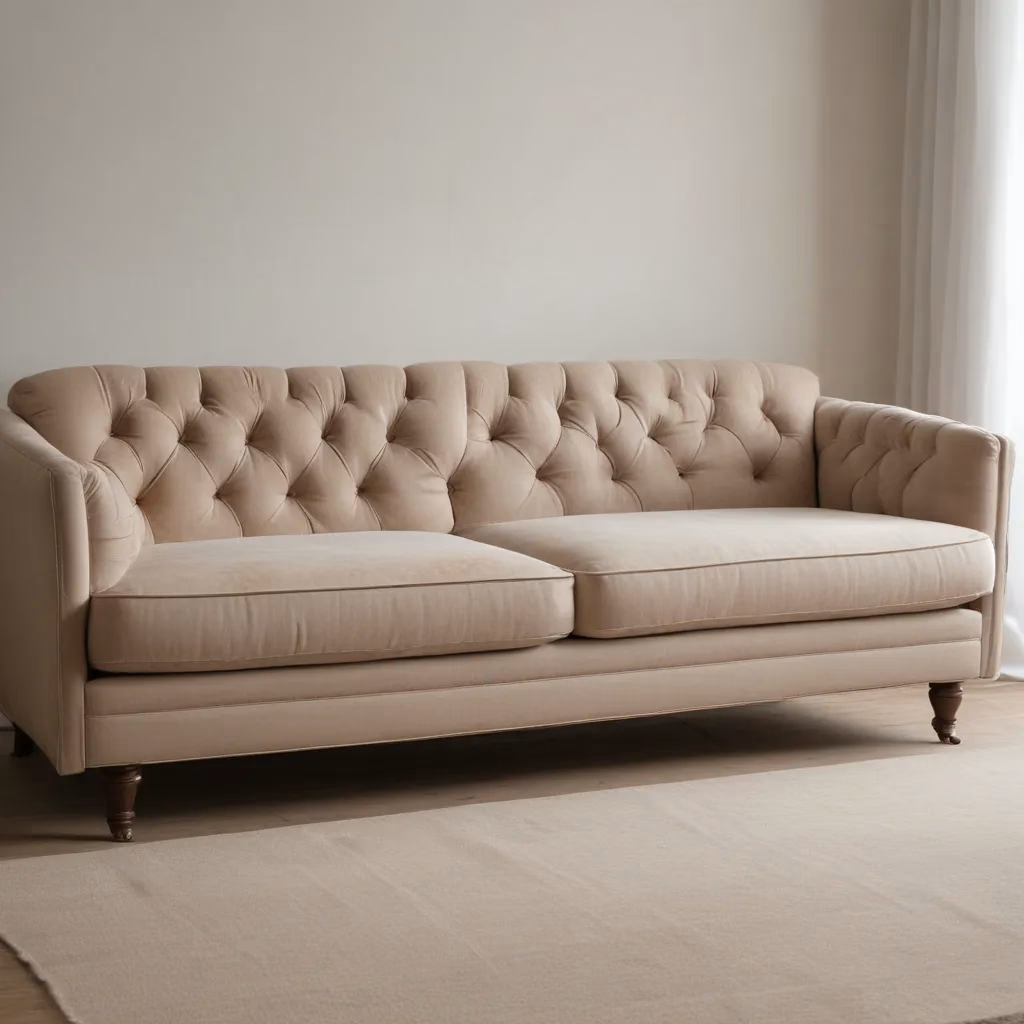
The Evolution of Sofa Design in the UK
In recent years, the UK furniture market has witnessed a significant shift towards sofas that offer both comfort and adaptability. As of September 2024, homeowners across the country are increasingly seeking furniture pieces that can adjust to their changing needs throughout the day. This trend reflects a broader movement in interior design, where functionality meets style in new and innovative ways.
The concept of adjustable sofas isn’t entirely new, but recent advancements in technology and design have brought these versatile pieces to the forefront of the furniture industry. Today’s adjustable sofas go beyond simple reclining features, offering a range of customisation options that allow users to modify their seating experience in multiple ways.
One of the key drivers behind this trend is the growing awareness of ergonomics and the importance of proper posture in home environments. As more people work from home or spend extended periods in their living spaces, the need for furniture that supports various activities has become paramount. Adjustable sofas address this need by providing options for both relaxation and more upright, supportive seating positions.
Understanding Adjustable Sofa Features
When shopping for an adjustable sofa, it’s important to understand the various features available and how they can enhance your comfort and living space. Here are some of the most common adjustable elements found in modern sofas:
Reclining Backrests
Many adjustable sofas now come with backrests that can be tilted to various angles. This feature allows users to find the perfect position for reading, watching television, or simply relaxing. Some models offer manual adjustment, while others incorporate electric mechanisms for effortless control.
The ability to adjust the backrest angle is particularly beneficial for those with back problems or for individuals who need to alternate between different postures throughout the day. It’s worth noting that the range of motion can vary between models, so it’s advisable to test different options before making a purchase.
Extendable Footrests
Complementing the reclining backrest, many adjustable sofas also feature extendable footrests. These can be raised independently of the backrest, providing support for the legs and enhancing overall comfort. This feature is especially useful for taller individuals or those who prefer to elevate their feet while relaxing.
When considering a sofa with an extendable footrest, pay attention to the mechanism’s durability and ease of use. Some models may require more force to operate, which could be challenging for older users or those with limited mobility.
Adjustable Headrests
An often-overlooked but highly valuable feature is the adjustable headrest. This element allows users to customise neck support, which is crucial for maintaining proper alignment of the spine during extended periods of sitting. Adjustable headrests can typically be tilted forward or backward and sometimes raised or lowered to accommodate different user heights.
For those who enjoy watching television or using devices while seated, an adjustable headrest can significantly reduce neck strain. It’s a feature that becomes increasingly appreciated over time, especially in households with multiple users of varying heights.
Comparing Adjustment Mechanisms
When it comes to the actual mechanisms that enable these adjustable features, there are primarily two types: manual and electric. Each has its own set of advantages and considerations:
| Mechanism Type | Advantages | Considerations |
|---|---|---|
| Manual | – Generally more affordable – No reliance on power sources – Often simpler to repair |
– May require physical effort to adjust – Fewer precise adjustment options – Can be challenging for users with limited mobility |
| Electric | – Effortless adjustment with push-button control – More precise positioning options – Easier for all users, regardless of physical ability |
– Typically more expensive – Requires proximity to a power outlet – Potential for mechanical failure over time |
The choice between manual and electric mechanisms often comes down to personal preference, budget, and specific needs. For those prioritising ease of use and precision, electric mechanisms may be worth the additional investment. However, manual adjustments can offer a more tactile experience and may be preferred by those who appreciate simplicity and reliability.
Material Considerations for Adjustable Sofas
The choice of upholstery material is crucial for any sofa, but it becomes even more important when dealing with adjustable models. The material needs to be durable enough to withstand repeated movement and flexible enough to accommodate the various positions without wearing or tearing.
Leather Options
Leather remains a popular choice for adjustable sofas due to its durability and ability to stretch without losing shape. It’s particularly well-suited for sofas with moving parts as it can withstand the friction caused by adjustment mechanisms. However, not all leather is created equal:
- Top-grain leather is the highest quality and most durable option, offering excellent resistance to wear and tear.
- Split leather is less expensive but may not be as durable for adjustable sofas.
- Bonded leather should generally be avoided for adjustable pieces as it’s more prone to cracking and peeling with repeated movement.
When opting for leather, it’s important to consider the maintenance requirements. Regular conditioning can help maintain the material’s flexibility and prevent cracking, especially in areas subject to frequent adjustment.
Fabric Choices
For those who prefer fabric upholstery, there are several options well-suited to adjustable sofas:
- Microfibre is highly durable and resistant to wear, making it an excellent choice for moving parts.
- Performance fabrics are engineered to withstand heavy use and are often stain-resistant, which can be beneficial for households with children or pets.
- Tight-weave cotton blends can offer a good balance of durability and comfort, though they may require more frequent cleaning.
When selecting fabric for an adjustable sofa, pay attention to the rub count, which indicates the material’s durability. A higher rub count (typically 15,000 or above for residential use) suggests better resistance to wear from repeated adjustments.
Integrating Adjustable Sofas into Your Interior Design
While functionality is a key benefit of adjustable sofas, it’s equally important to consider how these pieces will fit into your overall interior design scheme. Here are some tips for seamlessly incorporating adjustable sofas into your living space:
Colour Coordination
Choose a colour that complements your existing decor or serves as a focal point. Neutral tones like grey, beige, or navy can provide versatility, while bolder colours can make a statement. Consider the following colour strategies:
- Monochromatic: Select a sofa in a different shade of your room’s dominant colour for a cohesive look.
- Complementary: Choose a sofa colour that contrasts with your existing palette to create visual interest.
- Accent: Use the sofa colour to tie in with other accent pieces in the room, such as curtains or rugs.
Space Planning
Adjustable sofas often require more space to fully recline or extend. When planning your layout:
- Allow at least 45-60 cm of clearance behind the sofa for reclining backrests.
- Ensure there’s ample space in front of the sofa for extended footrests.
- Consider L-shaped or modular designs for corner placements to maximise space efficiency.
Accessorising
Enhance the versatility of your adjustable sofa with carefully chosen accessories:
- Throw pillows can add comfort and style while also supporting different seating positions.
- Side tables with adjustable heights can complement the sofa’s functionality.
- Reading lamps with flexible arms can be positioned to suit various reclining angles.
Maintenance and Care for Adjustable Sofas
To ensure the longevity of your adjustable sofa, proper maintenance is essential. Here are some key care tips:
-
Regular cleaning: Vacuum upholstery weekly and promptly clean any spills to prevent staining.
-
Lubrication: For manual mechanisms, apply a silicone-based lubricant to moving parts annually to prevent squeaking and ensure smooth operation.
-
Electrical components: Keep electric mechanisms free from dust and debris, and avoid overloading electrical sockets.
-
Weight distribution: Encourage even use of all seating positions to prevent uneven wear.
-
Professional servicing: Consider annual check-ups by a furniture technician, especially for electric models, to address any potential issues early.
By following these maintenance guidelines, you can help ensure that your adjustable sofa remains comfortable and functional for years to come.
The Future of Adjustable Sofa Technology
As we look towards the future, the adjustable sofa market in the UK is poised for further innovation. Some emerging trends include:
-
Smart integration: Sofas that can be controlled via smartphone apps or voice commands, allowing for preset positions and even learning user preferences over time.
-
Health monitoring: Built-in sensors that can track sitting time and posture, providing feedback to users about their seating habits.
-
Sustainable materials: An increased focus on eco-friendly fabrics and padding materials that maintain durability and comfort while reducing environmental impact.
-
Modular designs: More sofas that can be easily reconfigured to suit changing room layouts or family needs.
As these technologies develop, consumers can expect even greater levels of customisation and comfort from their adjustable sofas.
Making the Right Choice for Your Home
Selecting the perfect adjustable sofa requires careful consideration of your specific needs, space constraints, and design preferences. Here’s a checklist to help guide your decision:
-
Assess your space: Measure your room and doorways to ensure the sofa will fit comfortably, both in its standard and fully adjusted positions.
-
Consider your primary use: Will the sofa be used mainly for relaxation, work, or entertainment? This can help determine which adjustable features are most important.
-
Test before you buy: Visit showrooms to try out different models and adjustment mechanisms. Pay attention to ease of use and comfort in various positions.
-
Evaluate upholstery options: Choose a material that balances aesthetics with durability and ease of maintenance.
-
Check warranty and after-sales service: Ensure you understand what’s covered and for how long, especially for electric components.
-
Budget wisely: While adjustable sofas can be a significant investment, consider the long-term value in terms of comfort and versatility.
By taking these factors into account, you can find an adjustable sofa that not only meets your immediate needs but also adapts to your changing lifestyle over time.
For those interested in exploring a wide range of adjustable sofa options, Sofa Spectacular offers a curated selection of high-quality pieces designed to suit various preferences and interior styles.
In conclusion, adjustable sofas represent a significant advancement in home comfort and functionality. By understanding the available features, materials, and design considerations, UK consumers can make informed choices that enhance their living spaces and daily comfort. As technology continues to evolve, these versatile pieces of furniture are likely to become even more integral to modern home design, offering unparalleled customisation and support for diverse lifestyles.



